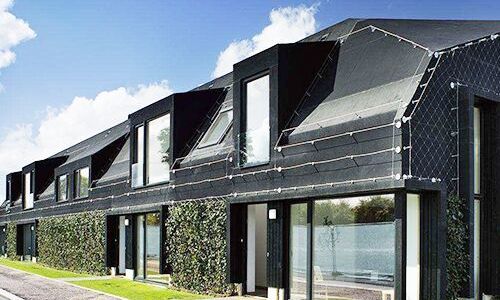Rubber membranes flat roofs are part of most flat roofs. The materials on flat roofs are mostly rubber. There are two types of roofing systems used for rubber membrane roofs; these are EPDM Rubber and Modified Bitumen Rubber EPDM is the choice Rubber Membrane Roofing material by Roofing Contractors, but not the best! It is hard to detect a leak on an EPDM Rubber Membrane. These type of roofing systems are installed all over the United States and little does a potential buyer knows about its longevity and maintenance problems. Our Associated Roofing Contractors in Longview, TX, refuses to install EPDM Rubber Roof Systems any longer. We in the North East have seen the degradation of EPDM over the 30 years and always have steered away for it. EPDM Rubber is a thin rubber membrane and is susceptible to punctures from foot traffic as soon as 3 – 5 years of installation. EPDM seams start to fail due to the glue breakdown that bond the seams together. Most Roofing Contractors prefer to install EPDM Rubber because it’s relatively easy to install and looks and feels good to walk on. 1. The material most Roofing Contractors are familiar with for Flat Roofs, is EPDM. There are obvious reasons why. It’s easier to install. A good sales pitch is “there are “less seems” on the roof because they come in wider rolls. 2. Seams are a problem with EPDM but not so with Modified Bitumen Membrane or TPO. EPDM seams are glued together with contact cement. This technique has a lot of variables that could influence the outcome of the seems. 3. Temperature – Can not be too cold or too hot to apply the glue. 4. Humidity – to much could make the glue not stick to well. 5. Time – When you apply the glue or Contact cement to both surfaces, you have to wait for it to set, touch dry before you stick the two surfaces together. That waiting time is what starts the problem. Where you started to apply the adhesive and where you ended has a time difference. Therefore the adhesive will set at one end before it sets at the other end. 6. Not equally smeared – when you brush the contact cement on, it is impossible to be consistent with the amount you apply everywhere. 7. Preparation – The surfaces should be well cleaned with a chemical – and wiped off. Not very predictable. 8. Primer – some use primer and some don’t. There are too many variables and inconsistencies just with the installation of EPDM that it is almost impossible to have a long lasting roof without problems. After repairing so many EPDM roofs, we can say with high accuracy that it’s not the best solution for a Flat Roof. 1. The appearance is not as smooth and clean as EPDM or TPO. 2. The Torch Down Rubber membrane can be installed almost over any surface without much preparation. Unlike EPDM. 3. Seams are heat welded, and that makes for better adhesion. 4. Existing flashing that’s already in place eg.where the roof meets siding or skylights, drip-edges, chimneys can be easy reused by just cleaning the old material off. No need to replace it. Unlike EPDM or TPO. 5. Can almost be installed under any working condition – 30 degrees F to 110 degrees F. Sunny day or humid day. 6. Unskilled people can do repairs. (using Tar bought at local supply). 7. The Tear factor – Very unlikely to get damaged by traffic or people working. It’s a thicker and tougher rubber membrane than EPDM or TPO. 8. Modified Bitumen is a petroleum-based material, therefore can be directly installed over existing tar roofs or other Modified Bitumen Roofs. A double layer of Modified Bitumen Membrane fused together will last almost indefinite. Unlike TPO or EPDM. 9. Due to inexperience, many roofing contractors avoid this system. Source:https://flatroofdoc.com/rubber-membrane-roof-flat-video/EPDM – (ethylene propylene diene terpolymer)
Modified Bitumen Membranes
